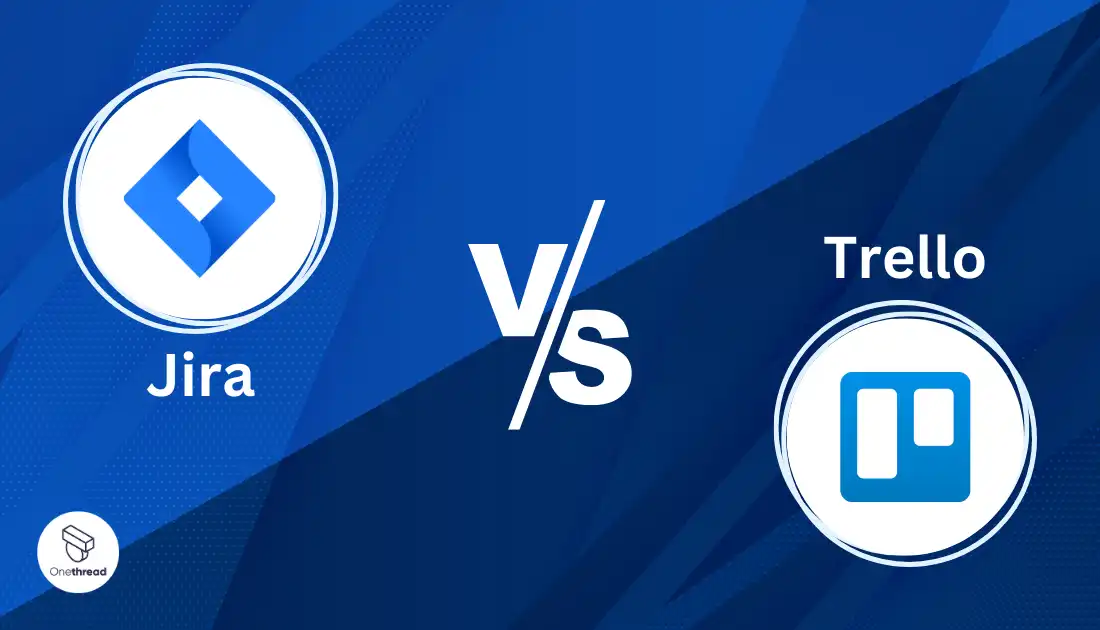Jira and Trello are two popular project management tools used by individuals and teams to organize their tasks and workflows. While both tools are designed to make project management easier, they have their own unique features that make them suitable for different types of projects.
As both are popular, people often compare Jira and Trello because of their similarities in terms of functionality and user interface. Both tools offer Kanban-style boards, card-based systems, and customizable workflows, which can make it difficult to decide which one to use for a specific project.
That is why, the aim of this blog post is to provide an in-depth comparison of Jira and Trello, highlighting the key differences between the two tools. By the end of this post, you should have a better understanding of which tool would be best suited for your specific needs.
What is Jira?
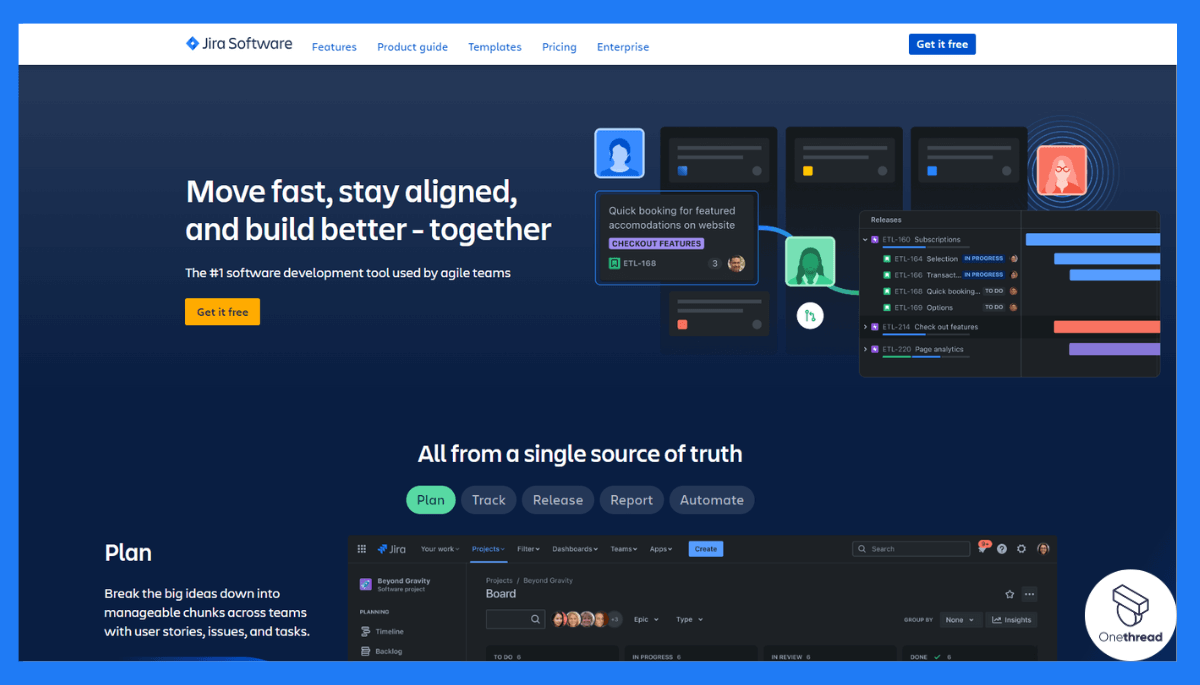
Jira is a well-known piece of project management software that was built by Atlassian. It is frequently employed by software development teams in order to manage the processes associated with their various projects. It is highly customizable, and it gives teams the ability to monitor and manage their work in a manner that is both flexible and effective.
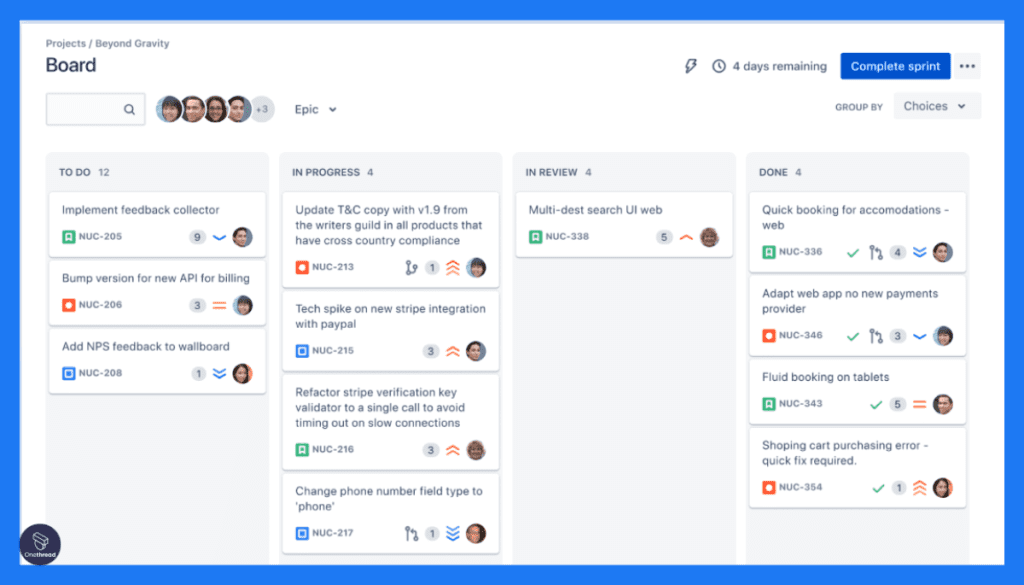
The following is a list of Jira’s most important features:
- Centralized platform: for team collaboration, task management, issue tracking, and bug fixing.
- Agile Project Management: Jira supports agile methodologies such as Scrum and Kanban, providing teams with features such as sprint planning, backlog management, and burndown charts.
- Customizable Workflows: Jira allows teams to create and customize their own workflows, including status transitions, issue types, and custom fields. This enables teams to tailor Jira to fit their specific project management needs.
- Integration with Other Tools: Jira integrates with a wide range of third-party tools, such as Confluence, Bitbucket, and Slack, making it easy for teams to collaborate and streamline their workflows.
- Reporting and Analytics: Jira provides teams with powerful reporting and analytics features, including customizable dashboards, project progress tracking, and time tracking.
- Mobile App: Jira has a mobile app for both iOS and Android, allowing team members to manage their tasks and projects on-the-go.
Overall, Jira is a comprehensive project management tool that provides teams with the flexibility and customization they need to manage their projects efficiently.
What is Trello?
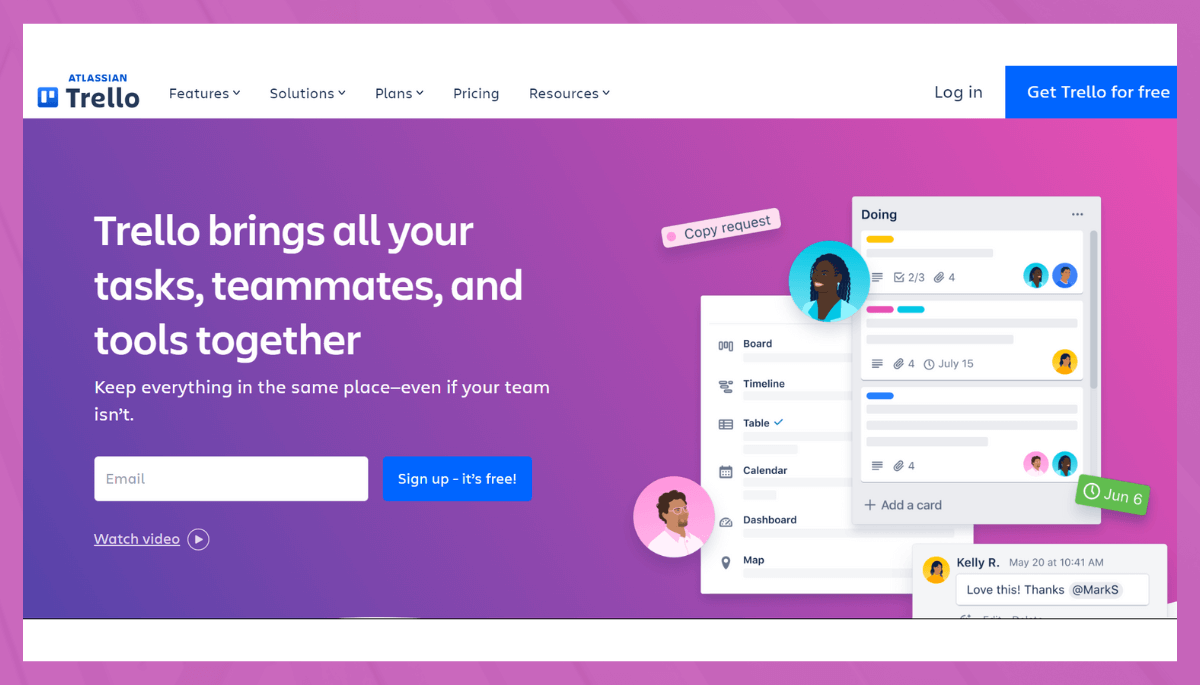
Trello is a popular visual project management tool that employs a card-based structure to assist teams in organizing their tasks and projects and determining their order of importance. Basically, it has a straightforward and easy-to-use user interface, which makes it effortless for teams to interact and manage their work in real-time.
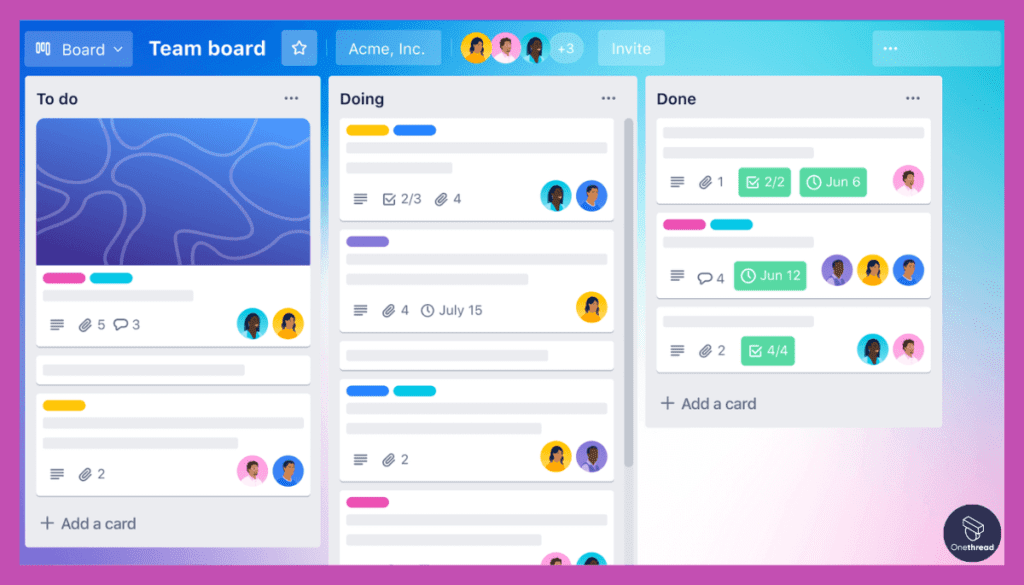
The following is a list of important aspects of Trello:
- Boards, Lists, and Cards: Trello uses a board-based system to help teams organize their projects. Each board contains lists, which represent stages of a project, and cards, which represent individual tasks or items. Teams can easily move cards between lists to track progress.
- Customizable Workflows: Trello allows teams to customize their workflows by creating their own lists, labels, and card types. This enables teams to tailor Trello to fit their specific project management needs.
- Collaboration and Communication: Trello provides teams with features such as comments, attachments, and due dates, making it easy for team members to communicate and collaborate on tasks.
- Integration with Other Tools: Trello integrates with a wide range of third-party tools, such as Google Drive, Slack, and Dropbox. These integrations make it easy for teams to collaborate and streamline their workflows.
- Mobile App: Trello’s mobile apps for iOS and Android allow members to manage tasks and projects on the go.
- Power-Ups: Trello offers a range of Power-Ups, which are integrations with third-party tools. These tools provide additional features such as time tracking, Gantt charts, and calendar views.
Jira vs Trello: Feature Comparison
While both Jira and Trello have their strengths and weaknesses, it’s important to understand the differences between them to make an informed decision.
Flexibility vs Structure:
Jira provides a highly flexible platform that allows teams to customize their workflows, issue types, and fields, while Trello provides a structured approach with its board, list, and card system.
Kanban vs Scrum:
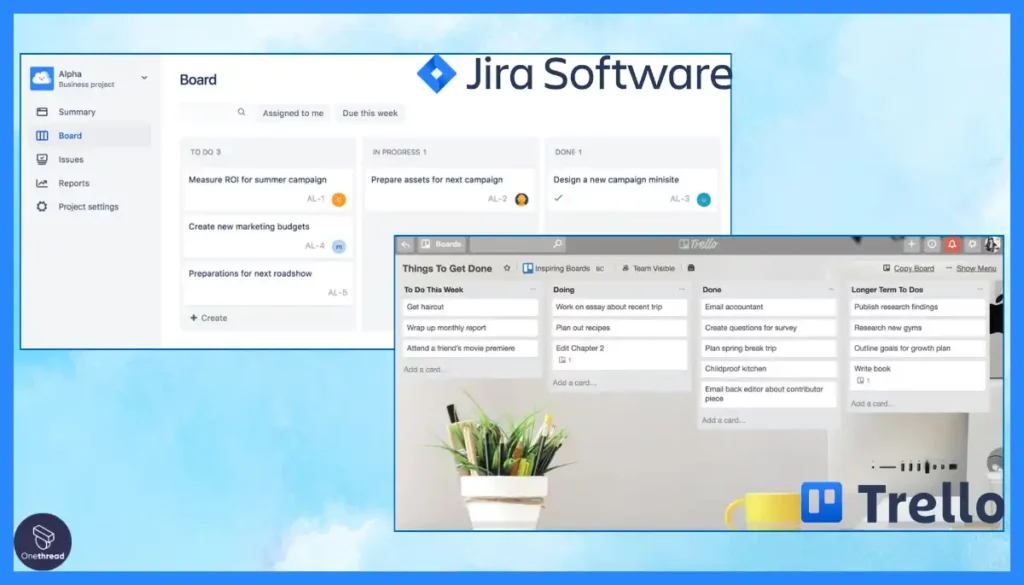
Jira offers support for both Kanban and Scrum methodologies, while Trello is primarily designed for Kanban-style workflows.
Integrations:
Integration | Jira | Trello |
Slack | Yes | Yes |
Google Drive | Yes | Yes |
GitHub | Yes | Yes |
Bitbucket | Yes | No |
Salesforce | Yes | Yes |
Asana | No | Yes |
Microsoft Teams | Yes | Yes |
Team collaboration features:
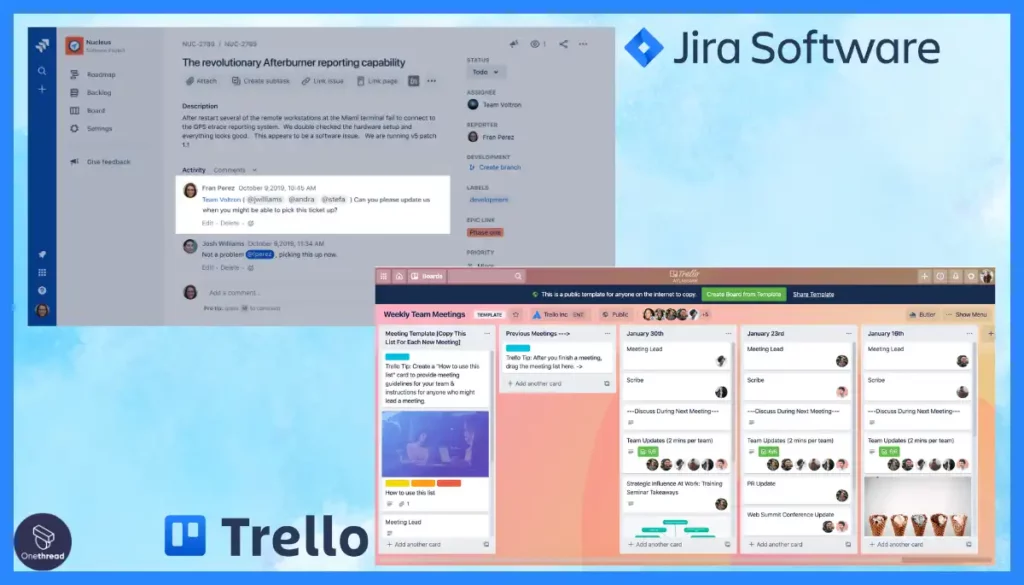
Both Jira and Trello offer team collaboration features like comments, attachments, and notifications. However, Jira also offers features like activity streams, mentions, and real-time collaboration.
Pricing:
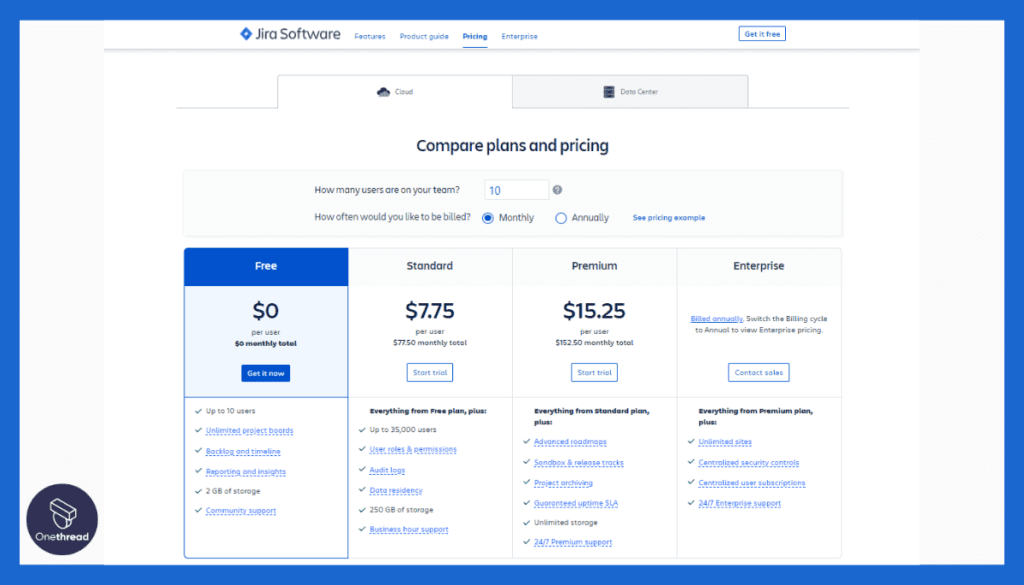
Jira offers a variety of pricing options, including a free plan for up to 10 users, as well as paid plans starting at $7 per user per month.
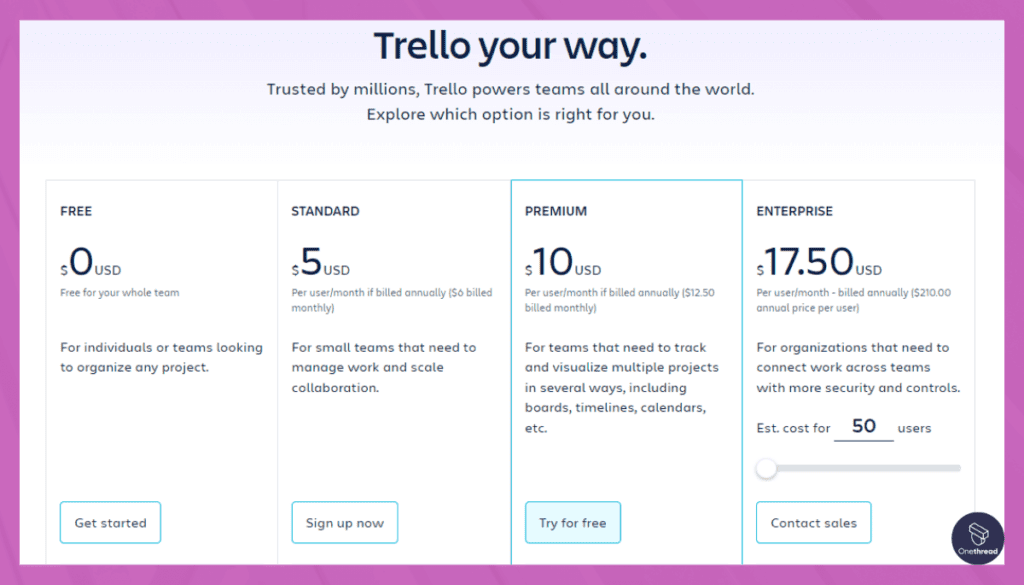
Trello offers a free plan with limited features, as well as paid plans starting at $12.50 per user per month
Other Alternatives
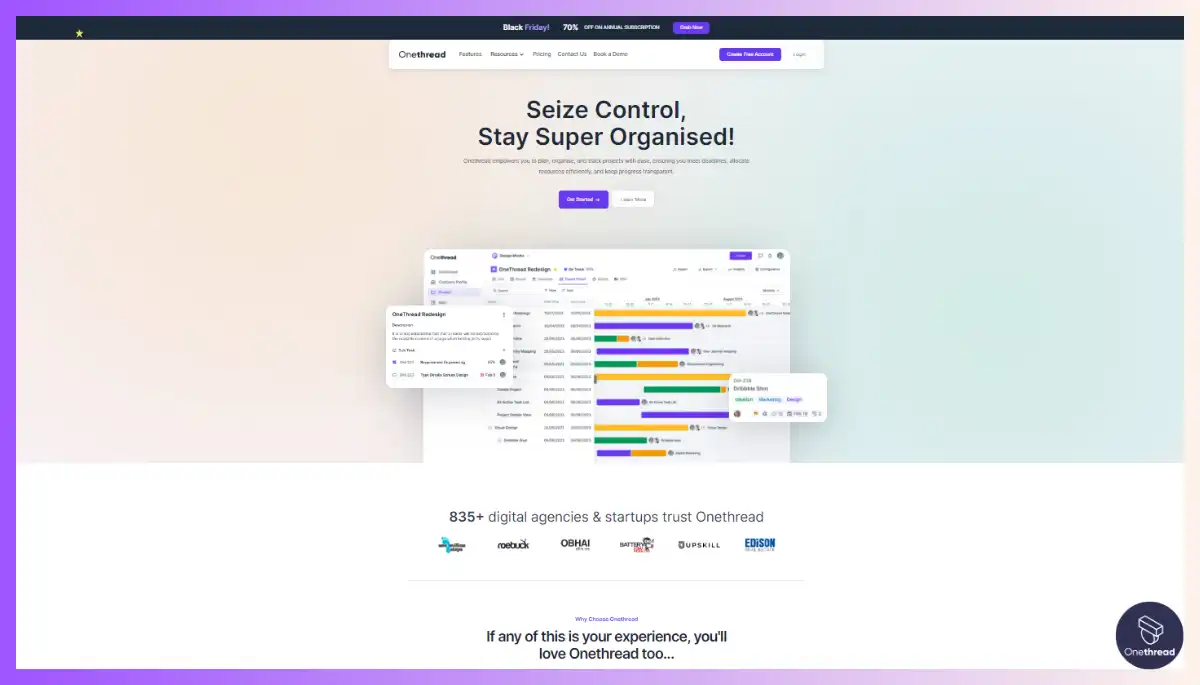
If you’re looking for an alternative to Jira and Trello that combines the best of both worlds, you might want to consider Onethread. Onethread is a project management tool that offers a simple and intuitive interface, with the flexibility to customize workflows and adapt to different project management methodologies.
Key Features of Onethread
If you’re looking for an alternative to Jira and Trello that combines the best of both worlds, you might want to consider Onethread. Onethread is a project management tool that offers a simple and intuitive interface, with the flexibility to customize workflows and adapt to different project management methodologies. Here are some of the key features of Onethread that it has in common with Jira and Trello:
Board-based system:
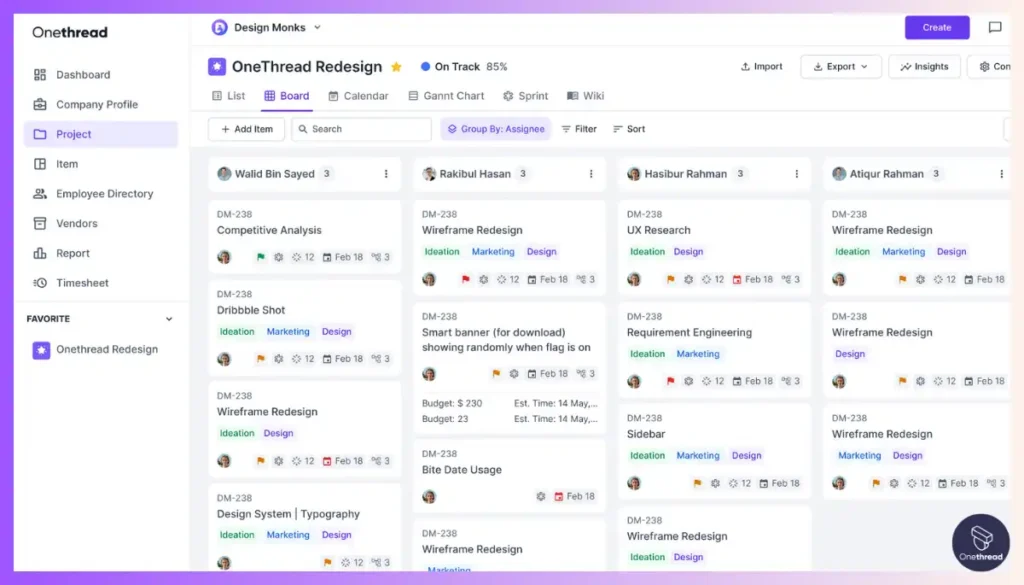
Onethread uses a board-based system to help teams organize their projects, with lists representing different stages and cards representing individual tasks.
Customizable workflows:
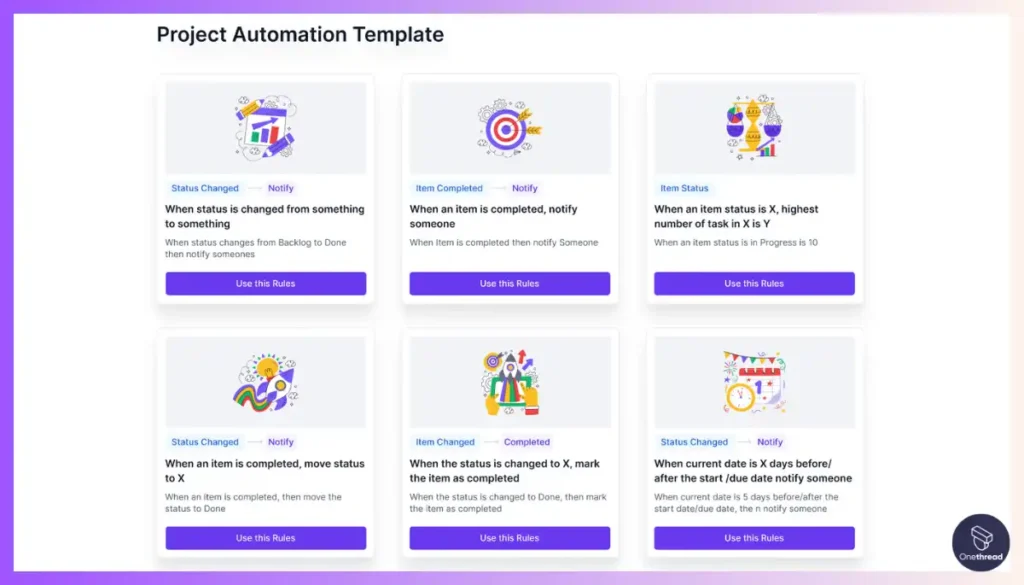
Like Jira and Trello, Onethread allows teams to customize their workflows. Basically, Onethread allows you to create your own issue types, fields, and labels to fit their specific needs.
Agile methodologies:
Onethread supports agile methodologies like Kanban and Scrum, allowing teams to track progress and collaborate in real-time.
Integrations:
Onethread integrates with popular tools like Slack, Google Drive, and Dropbox. These integrations altogether make it easy for teams to collaborate and streamline their workflows.
Team collaboration:
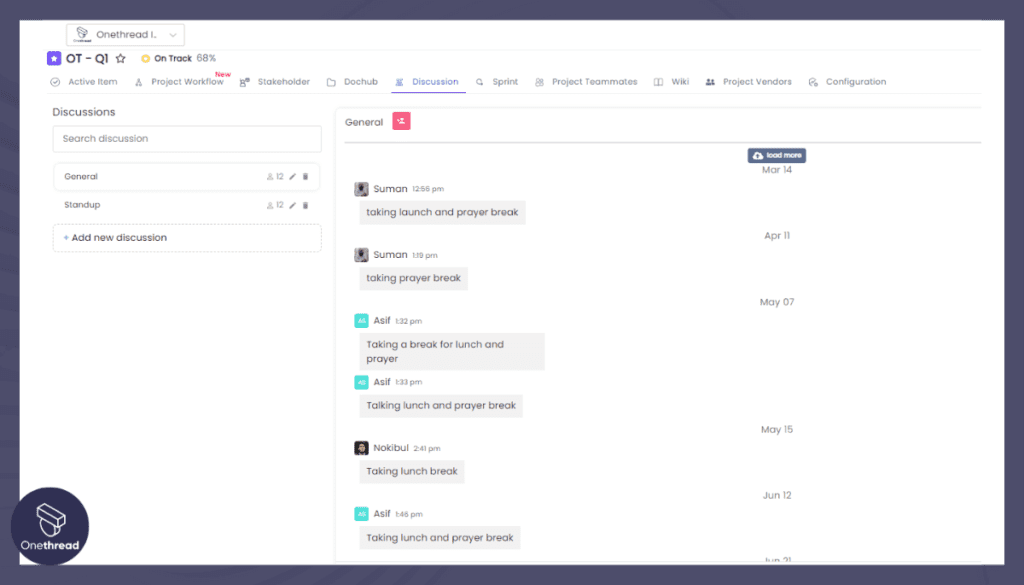
Onethread provides features like comments, mentions, and notifications, allowing team members to communicate and collaborate on tasks.
Overall, Onethread offers a user-friendly and customizable platform for teams to manage their projects and collaborate effectively. If you’re looking for a project management tool that combines Jira’s flexibility with Trello’s simplicity, Onethread might be the solution.
Jira vs Trello vs Onethread Comparison Chart
Here’s a comparison chart on Jira vs Trello vs Onethread based on different features for your decision-making:
Features | Jira | Trello | OneThread |
Ease of use | Moderately difficult | Very easy | Very easy |
Flexibility | Highly flexible | Moderately flexible | Highly flexible |
Adhere to agile | Supports Kanban and Scrum | Supports Kanban | Supports Kanban and Scrum |
Project management capabilities | Advanced reporting and analytics, extensive customization options | Basic reporting, limited customization options | Moderately advanced reporting and analytics, customizable workflows |
Kanban Boards | Yes | Yes | Yes |
Scrum Boards | Yes | No | Yes |
Customizable Workflows | Yes | No | Yes |
Agile Reporting | Yes | No | Yes |
iOS and Android Mobile Apps | Yes | Yes | Yes |
Number of Users on Free Version | Up to 10 | Unlimited | Up to 5 |
Jira vs Trello vs Alternatives: Which One Should You Use?

Overall, Jira and Onethread offer more advanced project management capabilities, with support for both Kanban and Scrum methodologies, customizable workflows, and agile reporting. Trello, on the other hand, offers a simpler, more visual approach to project management, with limited customization options. All three tools offer mobile apps for both iOS and Android. In terms of pricing, Trello offers an unlimited number of users on its free version, while Jira and Onethread have more limited free plans.
When it comes to choosing between Jira, Trello, and their alternatives, there is no clear winner. Each tool has its own unique strengths and weaknesses, and the best choice for you will depend on your specific needs and preferences.
Compare your scenario to make decision
- If you’re a large enterprise with complex project management needs, and you’re willing to invest the time and resources into learning a powerful tool, Jira might be the best choice for you. Jira offers advanced reporting and analytics, extensive customization options, and support for both Kanban and Scrum methodologies.
- If you’re a small or medium-sized team looking for a simple and intuitive tool to manage your projects, and you don’t need a lot of customization options, Trello might be the best choice for you. Trello offers a visual, board-based interface that is easy to use, and its free version supports an unlimited number of users.
- If you’re looking for a tool that combines the flexibility of Jira with the visual simplicity of Trello, and you’re willing to try something new, Onethread might be the best choice for you. Onethread offers a user-friendly interface with flexible workflows, and support for both Kanban and Scrum methodologies.
- If you’re looking for a free or low-cost alternative to Jira and Trello, you might want to consider tools like Asana, ClickUp, or Notion. These tools offer a range of features and pricing options, and may be a good fit for small or medium-sized teams on a budget.
Ultimately, the best way to choose between Jira, Trello, and their alternatives is to try them out for yourself and see which one works best for your team. Consider your team’s size, project management needs, and budget, and choose the tool that aligns with your goals and values.
Conclusion:
In the end, we’ve looked at Jira and Trello, two popular project management apps that each have their own set of pros and cons. Jira is a more capable and adaptable application than Kanban or Scrum, featuring significant customization possibilities, advanced reporting, and support for both of these agile project management frameworks. Trello, on the other hand, is a tool that is more visually appealing and user-friendly. It has a straightforward layout that is centered on boards, and its free plan allows for an infinite number of users.
Additionally, we talked about Onethread, which is a more recent option that combines the adaptability of Jira with the user-friendliness of Trello. Onethread supports both the Kanban and Scrum techniques, in addition to providing a user-friendly interface, flexible workflows, and cross-platform compatibility.
Your team’s individual requirements and tastes are the most important factors to consider when making a decision between Jira, Trello, and the other available options. When making your decision, you should take into account a number of different criteria, including the size of your team, the requirements for project management, your budget, and your personal preferences.
In a nutshell, if you run a large business with intricate requirements for project management and you are prepared to make an investment in a highly effective tool, Jira may be the ideal option for you to consider. Trello is a great option to consider if you have a small or medium-sized team and are seeking for a straightforward and user-friendly project management platform. And if you’re searching for a solution that combines the adaptability of Jira with the visual simplicity of Trello, Onethread might be the ideal option for you if you’re prepared to give something new a shot.
